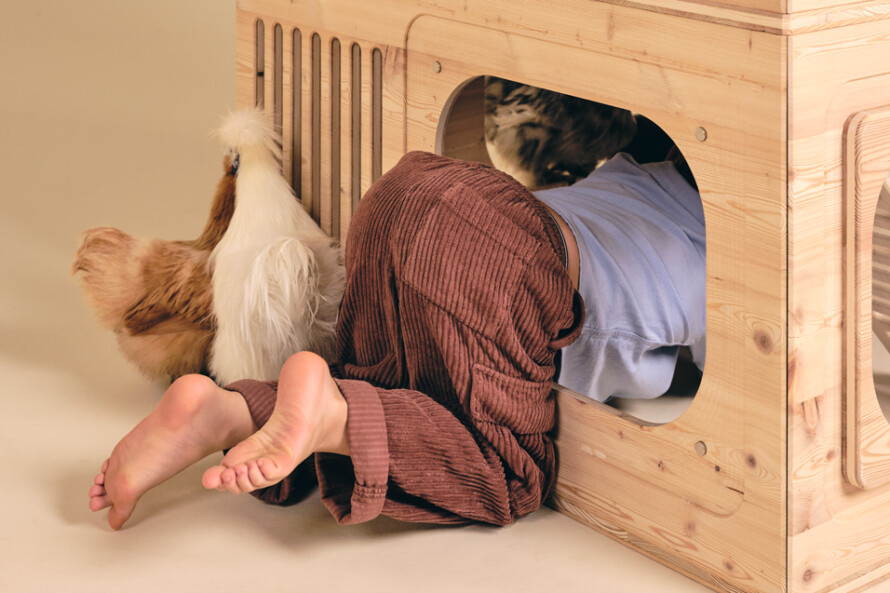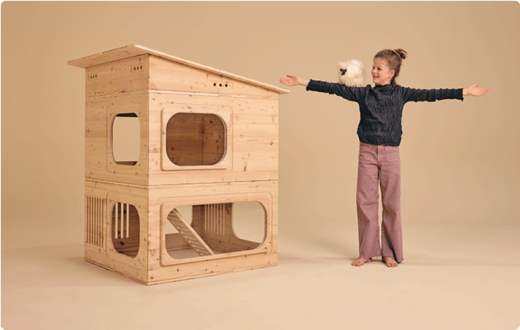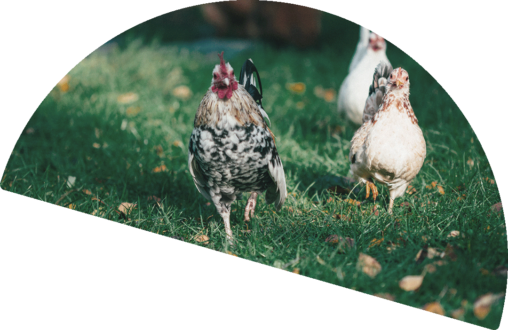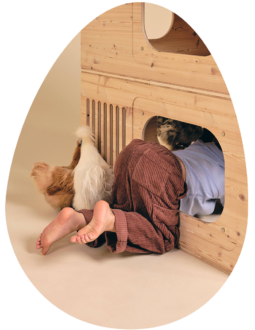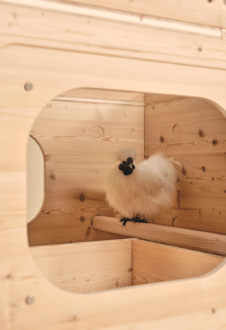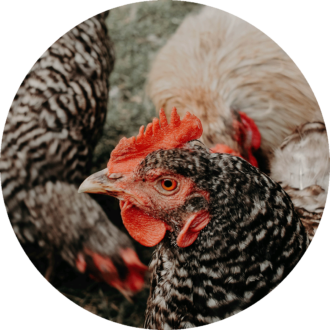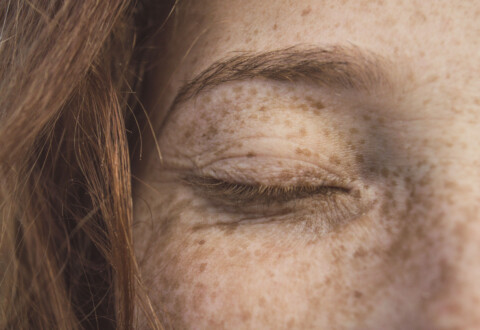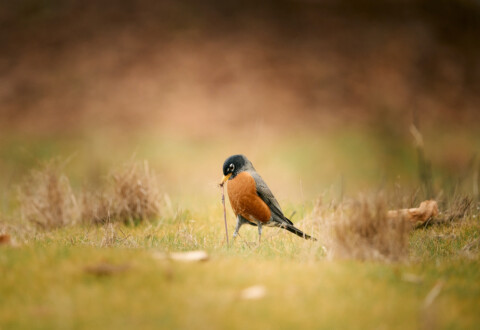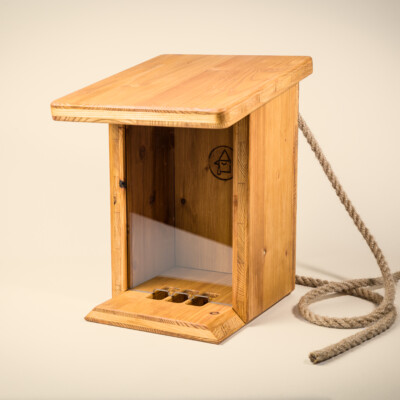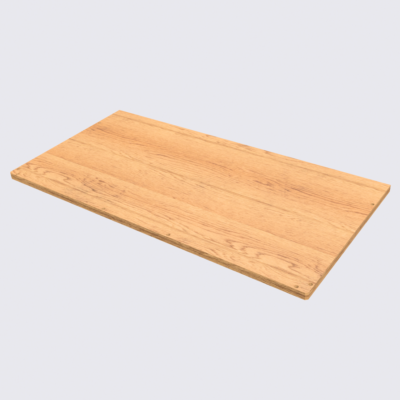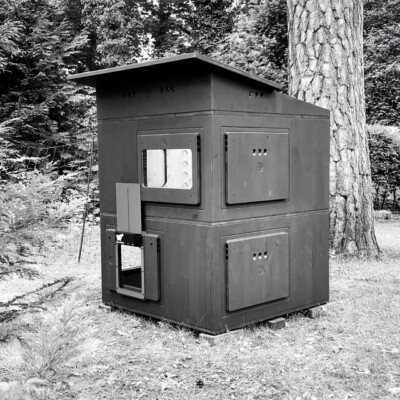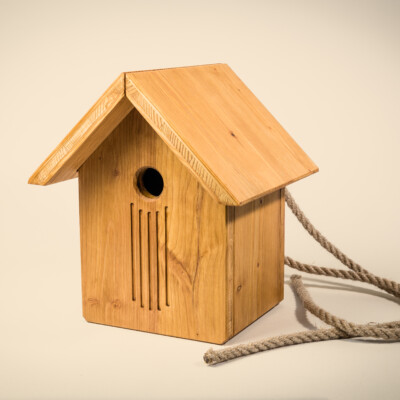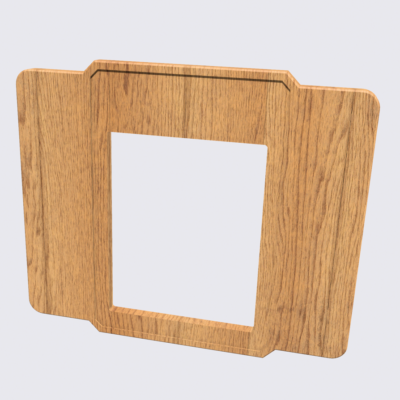As far as the coop is concerned, chickens are not very demanding. A chicken coop must be safe, bright, dry and draught-free. In terms of equipment, there are only two things that are a “must” – a perch and a laying nest. If the size of the coop is appropriate for the type and number of chickens and you keep it clean, the chickens will be happy. If the chicken coop is also large enough for your flock, then it really is only a matter of your practical and aesthetic requirements.
There is no such thing as the one size fits all, perfect chicken coop. This is due to the fact that every variation of chicken keeping comes along with different conditions. However, there are certainly some minimum requirements that every chicken-friendly coop must fulfil:
- Safety
> safe from foxes, martens and the like
- Light
> light during the day, dark at night
- Air
> plenty of fresh air, not too draughty
- Weather protection
> always dry inside the coop
- Minimum size
> enough space for all the chickens
- Perch
> no need for jostling for the best spots
- Laying nest
> for undisturbed egg laying
Safety
…so that your chickens are protected from foxes and the like:
Perhaps the most important feature of your chicken coop will be that your chickens are safe from foxes, martens and other predators. On the one hand, it must be completely lockable and, on the other hand, there must be no other opening through which a marten could squeeze. My research has shown that openings with a height/width of up to 3 cm are safe due to the anatomy of a marten (see gartenjournal.net for an example). Furthermore, you should make sure that no predator can dig its way under and into the hutch.

Light
…why it should be bright in your chicken coop, while also needing darkened areas:
Especially in the colder months, your chickens will enjoy as much natural light as possible. It is very important for the health, vitality and also the egg production of chickens that they are provided with sufficient warmth and natural sunlight (NB: the nesting/laying area should be separate and somewhat darkened).
In addition, the sun’s rays also ensure that the air/environment in the coop remains dry. This makes it more difficult for germs, parasites and unwanted insects to multiply. Not only that, UV light even kills germs.
A lot of light is essential at the latest when there is a possible obligation to keep the chickens inside a coop. The greatest amount of sunlight enters the barn if the main window front faces the south or south-east.
In summer, in contrast to this, you should make sure that little sunlight enters the coop, otherwise it will quickly become too hot. It is best to choose a coop where you can use windows or openings differently for different seasons.
Air
…why fresh air is important, but draughts are unwanted:
On the one hand, it is important that plenty of fresh air always circulates inside the coop. Especially in high summer, ideally you can replace windows and doors with air-permeable alternatives.
On the other hand, you should make sure that draughts are avoided as far as possible. Especially in winter and on humid autumn days, draughts are not good for the chickens and they could even catch a cold. Humidity in combination with draught must be avoided at all costs.
Fresh air is supplied via slits or other small openings, which should be marten-proof (if necessary with the help of wire mesh). Ideally these openings can also be closed if necessary.
Weather protection
…why it should be as dry as possible in your chicken coop:
Your chickens will be best off if it is always as dry as possible inside the coop. This means, above all, that the chicken coop is well protected against rain and snow. Even during heavy rain, not a drop of water should leak into the coop.
Complete dryness is not possible, however: if it rains during the day, for example, and the chickens then return to the coop soaking wet (which, in my experience, bothers them surprisingly little), then it will also become significantly more damp and humid inside. For this reason, it is important – as described above – that enough fresh air is constantly circulating into the coop to allow the humid air to escape and to dry both coop and chickens.
> My TIP: “You can spot a low-grade chicken coop through…
- its roof being covering with cardboard: on the one hand, holes and cracks will very quickly appear and thus it will leak, and on the other hand, the unavoidable cavity under the cardboard provides ideal conditions for the red bird mite
- the use of cheap softwood: the coop will break after 1-2 years
- wooden parts being stapled and nailed together: you can no longer remove or disassemble the parts, which makes cleaning very difficult (which is absolutely necessary in the case of a parasite infestation, for example).
- the quality of the metal parts used, such as hinges, latches, etc.”
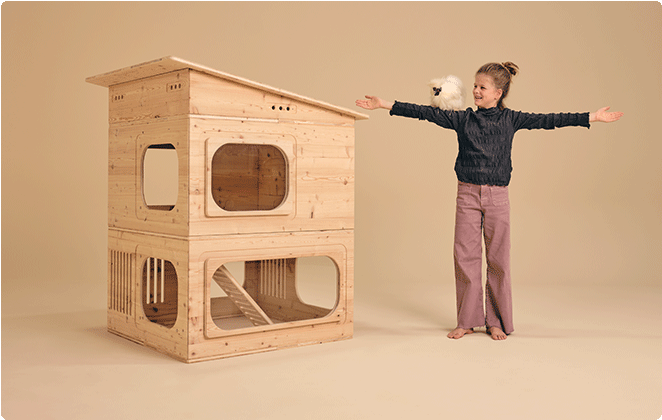
Minimum size
…what the minimum size of your chicken coop should be.
The required size of your coop depends less on the number of chickens that are to live in it, but rather on what the chickens are to do in it. If a coop is to be used exclusively for sleeping and laying eggs, then 5 (larger) to 10 (smaller) chickens can live in 1m² of coop space. If, however, the coop is also to serve as a drinking, feeding, etc space, and perhaps even for sand bathing, then you should plan for considerably fewer chickens per m² of coop area. Of course, as with the run, larger chicken breeds need significantly more space than smaller ones.
If the coop is too small for a particular group of chickens, smell can become a problem, hygiene or health issues can occur and there may even be fighting among the chickens. You will almost certainly not have any of these problems by following this rule of thumb:
> My RULE OF THUMB: “Max. 5 hens per 1 m² of coop area in a pure roosting house, or max. 3 hens per 1 m² of coop area in a fully-equipped coop.”
Perch
…a must for almost all chicken breeds:
Perches are modelled on the birds’ natural roosting places: namely branches of trees and bushes. For species-appropriate chicken keeping, therefore, the need for a perch is beyond question. Silkie chickens are the only exception to this, preferring to sleep directly on the ground rather than on a perch – this is probably due to their inability to fly!
Often several perches are used at different heights to accommodate different chicken breeds and rankings. In my opinion, a single perch is also a good solution in any case, as long as each chicken finds its place on it.
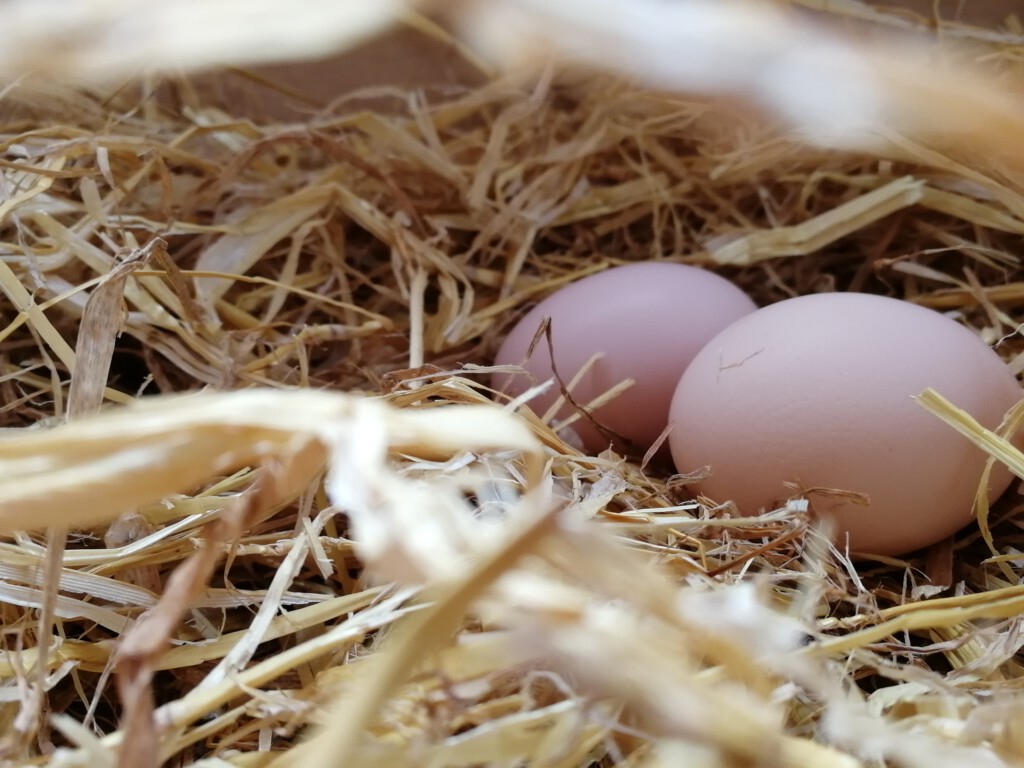
Laying nest
…a necessary comfort for your hens:
Like most female birds, hens need a place that gives them a greater sense of safety and security to lay eggs: a nest.
Depending on how prolific their egg-laying is, you will need different numbers of nests. I think that 1 nest is sufficient for 3, sometimes even up to 5 hens. If necessary, hens may share a nest or simply lay their egg in another protected place – no big deal.
Finally:
> My TIP: “Before buying, you should check whether the barn is already weatherproofed or whether you still have to do it yourself. High-quality paint can soon mount up to €50 – €100, and the time needed for painting is usually much longer than expected. You will probably have to factor in several hours.”
